Michael Bloomberg’s first year as mayor of New York City produced decidedly mixed results, measured against the long-term statistical trends highlighted on these pages.
First, the good news from our quality-of-life index:
Felony complaints fell in 2002 for a 12th consecutive year, according to preliminary NYPD data. By this measure, crime in New York is occurring at considerably less than half the level of a decade ago—and less than one-third of the 1981 peak.
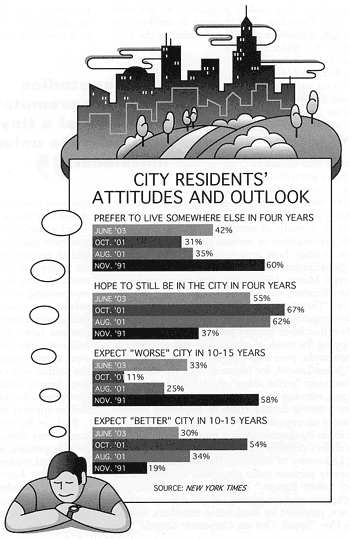
Nearly 72,000 more New Yorkers left the welfare rolls. After reaching 1.1 million in 1995, the number of welfare recipients in the city by the summer of 2002 had tumbled to just over 425,000 people—fewest since the dawn of the Great Society era in the mid-1960s.
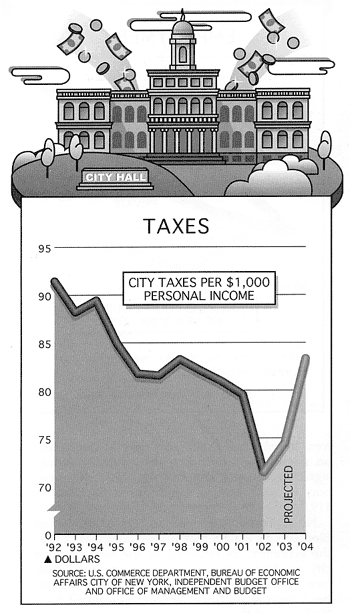
The continued drop in crime and welfare dependency builds on the signature achievements of Mayor Rudolph Giuliani—and Bloomberg clearly deserves credit, at the very least, for not messing with success in these areas.
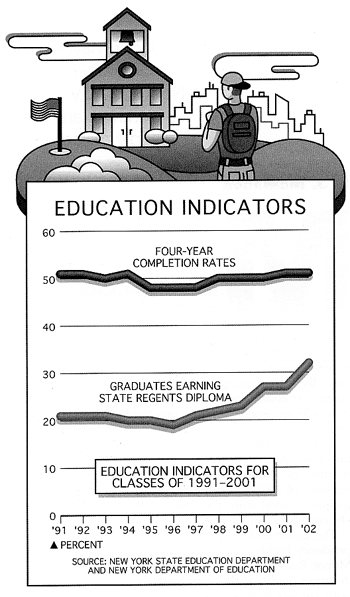
Gotham’s fiscal and economic picture last year was not nearly as bright. True, as our “Taxes” chart shows, city taxes relative to personal income fell in fiscal 2002, which ended June 30. But this drop did not reflect the impact of significant tax increases initiated by Bloomberg later in the year, starting with a record 18.5 percent property-tax hike. As a result, the city tax burden is rocketing back toward levels last seen in the mid-1990s.
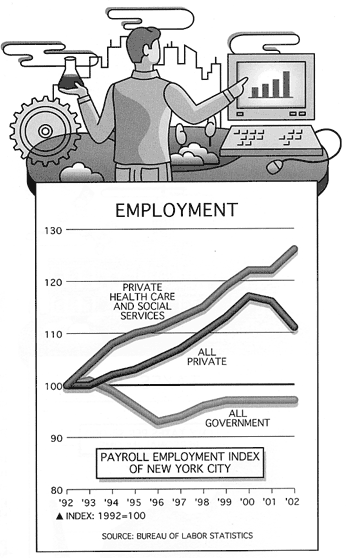
Those higher taxes will fall heavily on a city economy already severely weakened by the recession, stock-market slump, and terrorist attacks of the last two years. Private-sector employment in New York declined by 120,000 jobs in 2002—in percentage terms, the fourth-biggest loss in the last half century.
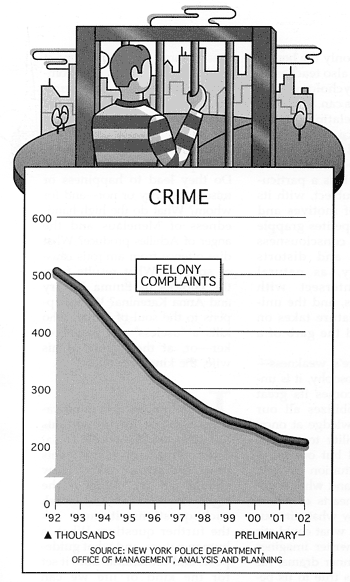
While the number of private jobs is still 11 percent above the woeful benchmark of the Dinkins era, as shown in the “Employment” chart, it is well below the peak of just a few years ago. Total government employment remained stable last year, despite Bloomberg’s modest trimming of the city payroll. Private health and social services, largely non-profit and heavily dependent on government subsidies, constituted the only significant growth sector of the New York economy in 2002. Overall employment declined by 119,000 jobs to a total of 3.57 million.
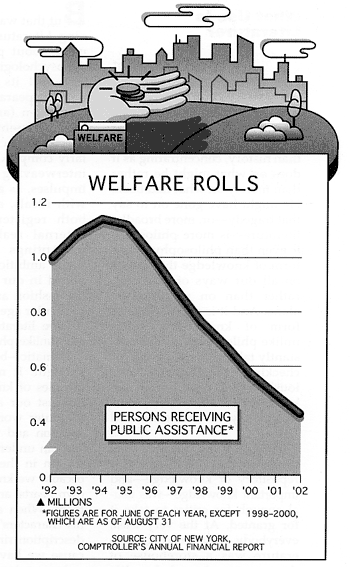
New Yorkers appear to be skeptical of Bloomberg’s claims that higher taxes won’t hurt the economy, as reflected in the latest poll of city residents’ attitudes by the New York Times (see “ ‘No More Taxes,’ Say New York’s Minorities,” page 8). By June 2003, 42 percent of New Yorkers said they hoped to be living somewhere else in four years, and fully one-third expected life in the city to be “worse” in the long term. While not nearly as bad as the most pessimistic public opinion surveys of the Dinkins era, these numbers indicated a marked erosion of confidence in the city’s future compared with Times poll data for mid- and late 2001.
As for education—Bloomberg’s self-proclaimed highest priority—the latest statistics provide further evidence that the link between financial inputs and academic outcomes remains tenuous. More city high school graduates are taking Regents exams, as the state requires (but with the passing grade lowered from 65 to 55 during the late 1990s). However, despite a massive infusion of new city school spending during this period, the number of students graduating within four years hasn’t improved at all.
Government policies often have lagging effects, and one could fairly argue that the trend lines for 2002—positive and negative—reflect the momentum of forces set in motion before Bloomberg took office. As time goes on, however, these indicators will increasingly come to reflect the mayor’s own performance.
